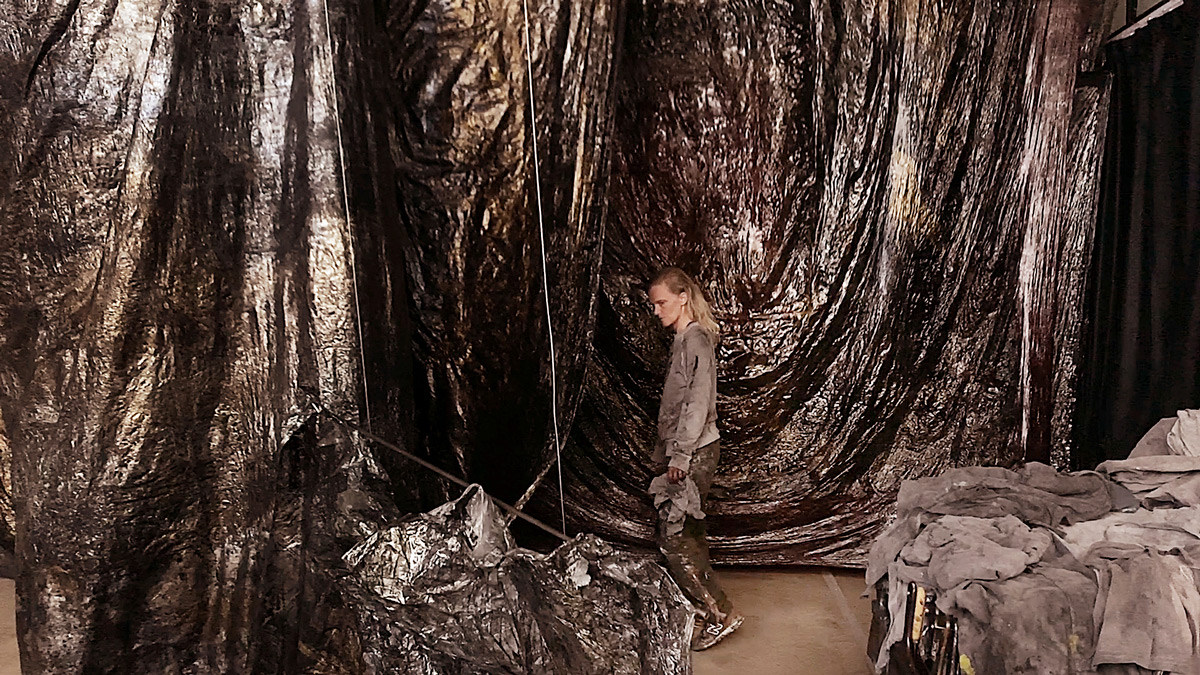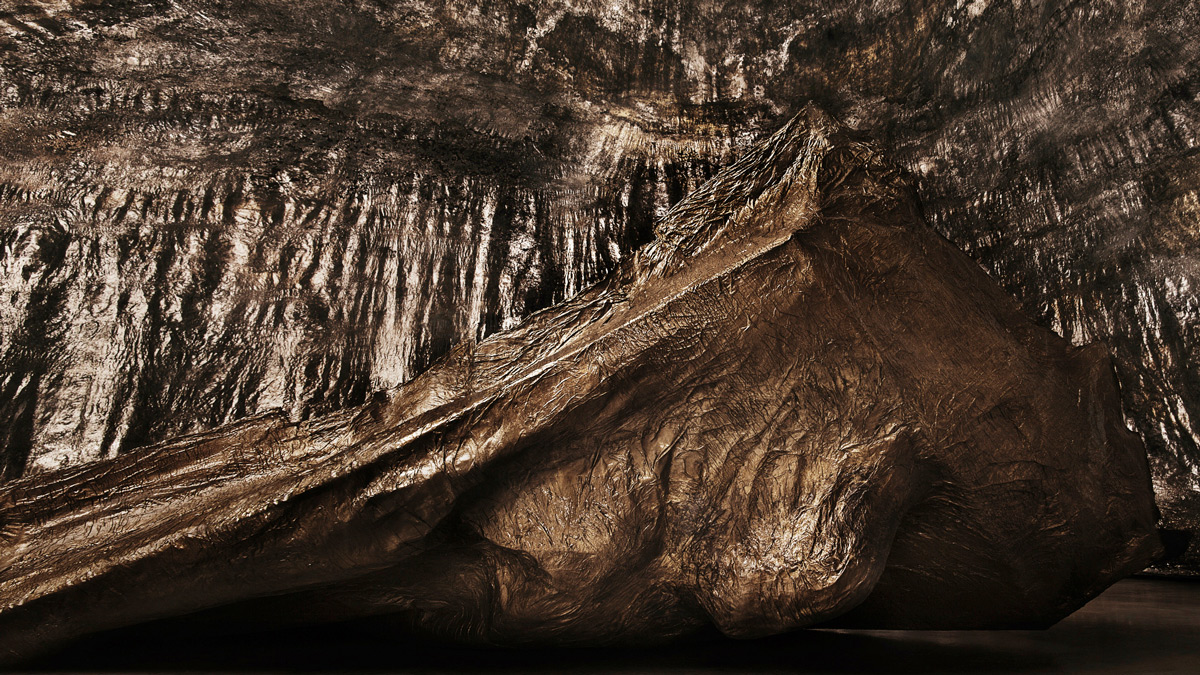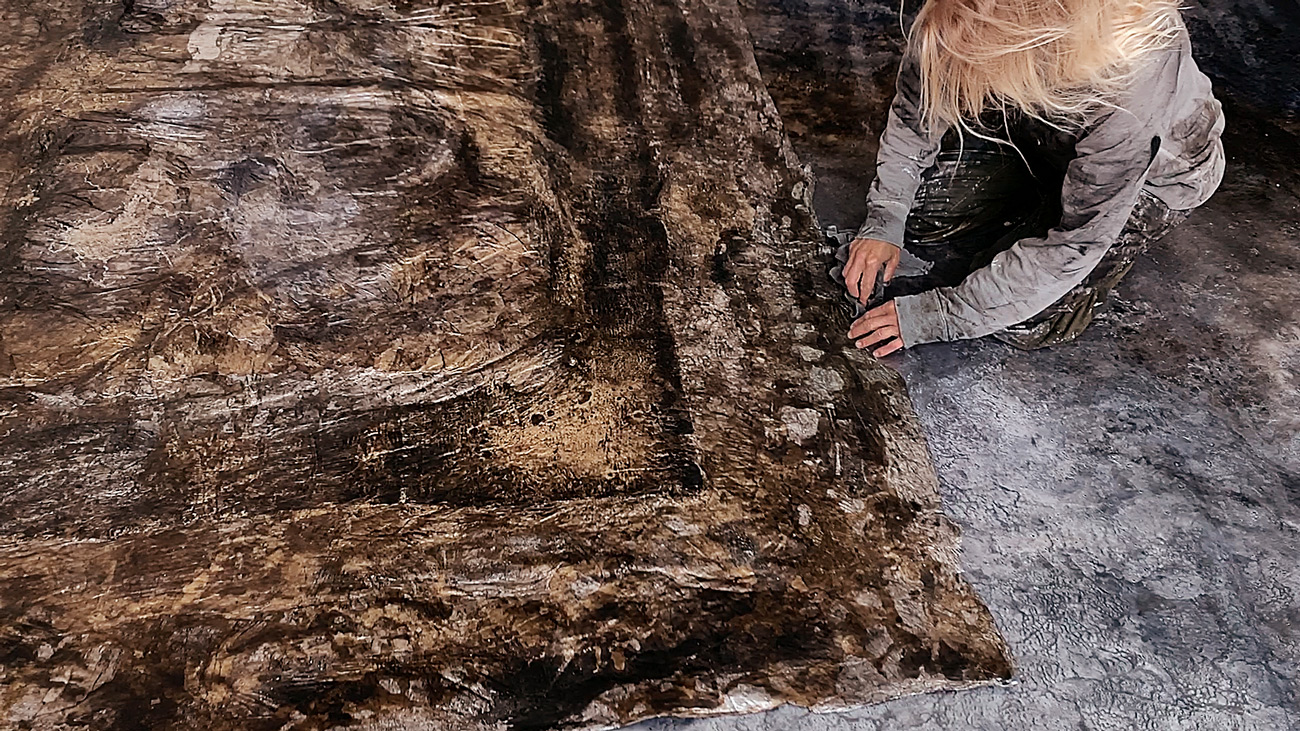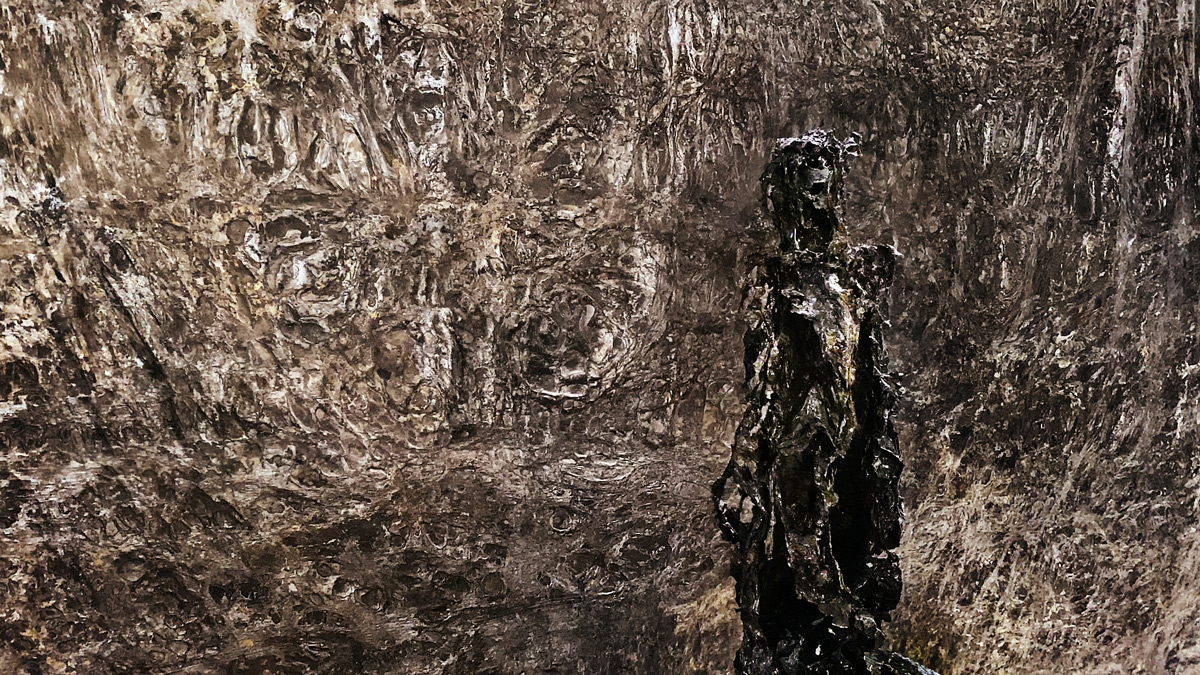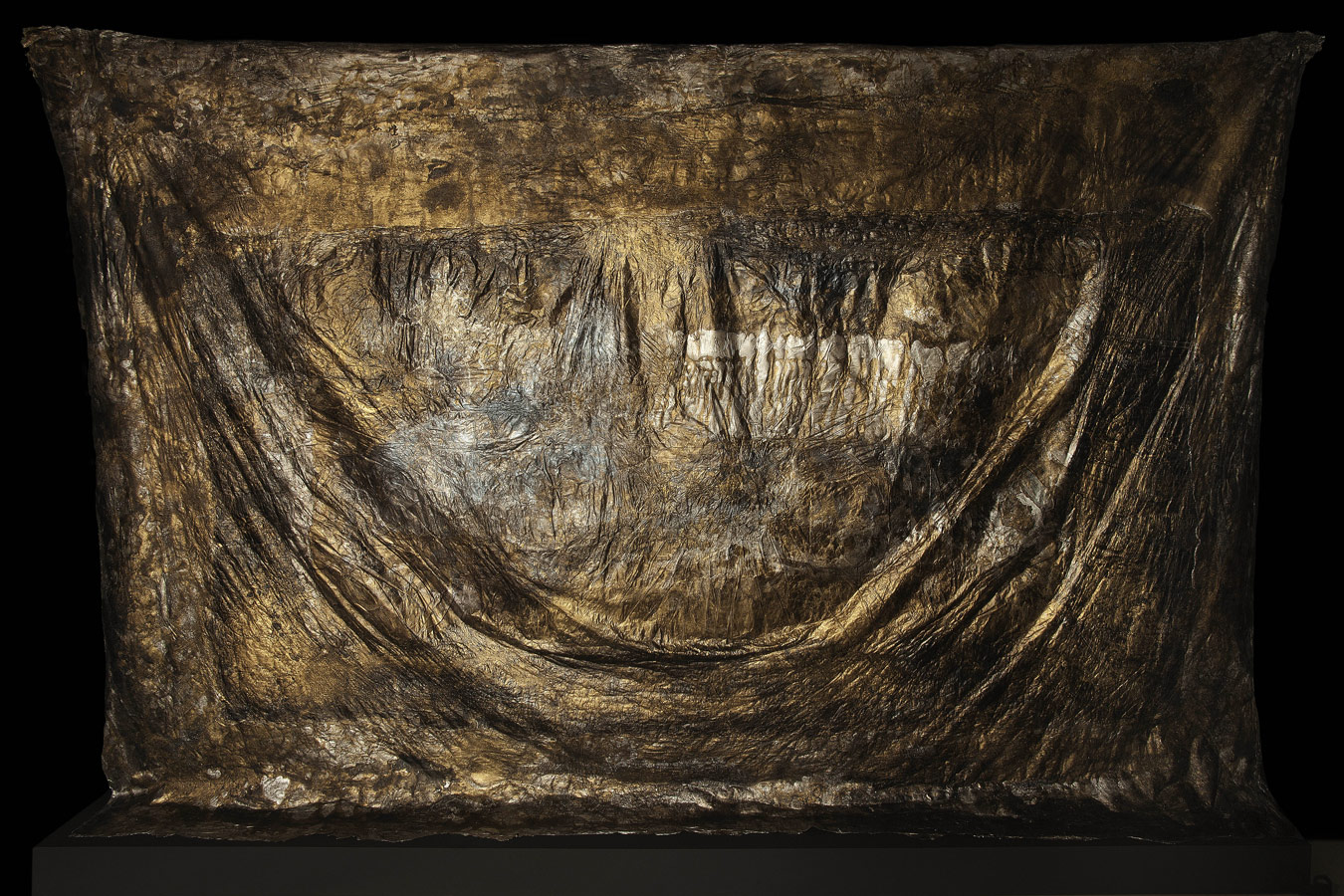The quest for light, Evi Keller's 'Holy Grail'
La Gazette Drouot / Le Monde de l’Art / Studio visit n*19 du 12 may 2017
The artist offers a unique approach, within the contemporary landscape, to the question of light. She opened the doors of her studio to us in order to initiate us into her “Matère-Lumière”. A journey beyond time.
By Stéphanie Pioda
One would rather imagine it deep in the midst of nature, in the heart of a forest or on the bank of a river, but no: Evi Keller’s studio is nestled in a private alley not far from the place de la République in Paris, sheltered from the rumble of the city. No sooner has one stepped in than one is thrust into an atemporal atmosphere, faced with the monumental veils of “Matière-Lumière” suspended on rails, welcomed by a sculpture in smudged white, part guardian of the place, part protector of the artist and her works. One half-expects it to come to life in order to ask us the riddle of the Theban Sphinx, so intriguing is its presence. A little bit further on, the flame of a candle flickers peacefully in front of a bodhisattva, adding a finishing touch to the studio’s contemplative spirit, accompanied by the rhythm of world music. It is within this magisterial space, bathed in light via grand bay windows, under 15 foot high ceilings, that the German artist (born in 1968) does her work.
After having studied art history, photography, and graphic design in Munich, Keller moved to Paris in 1994.
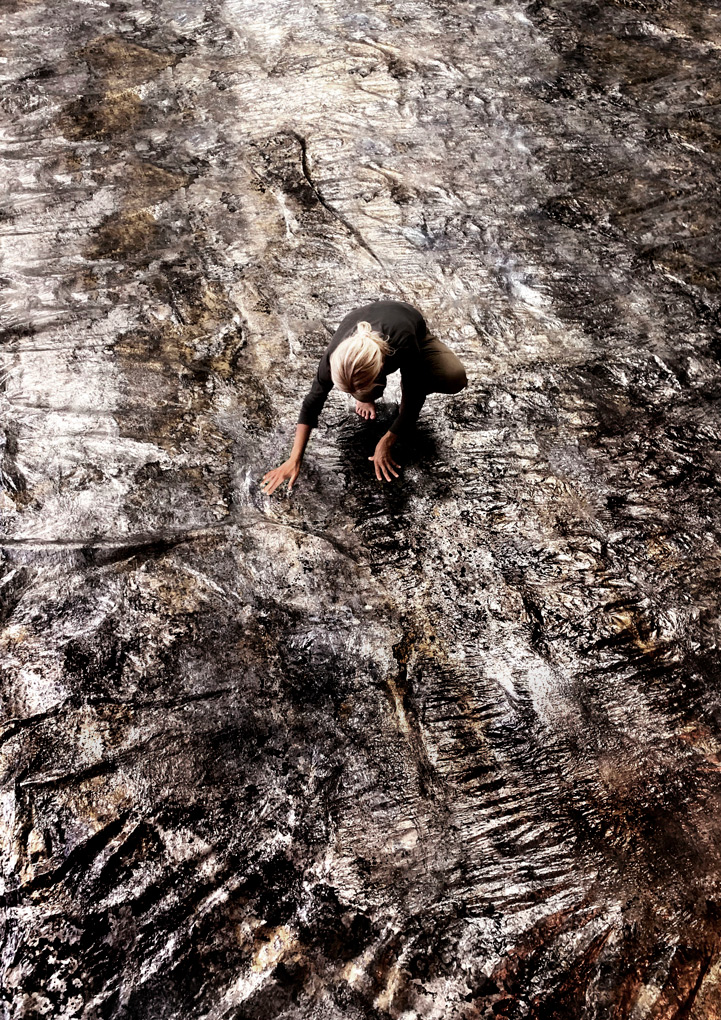
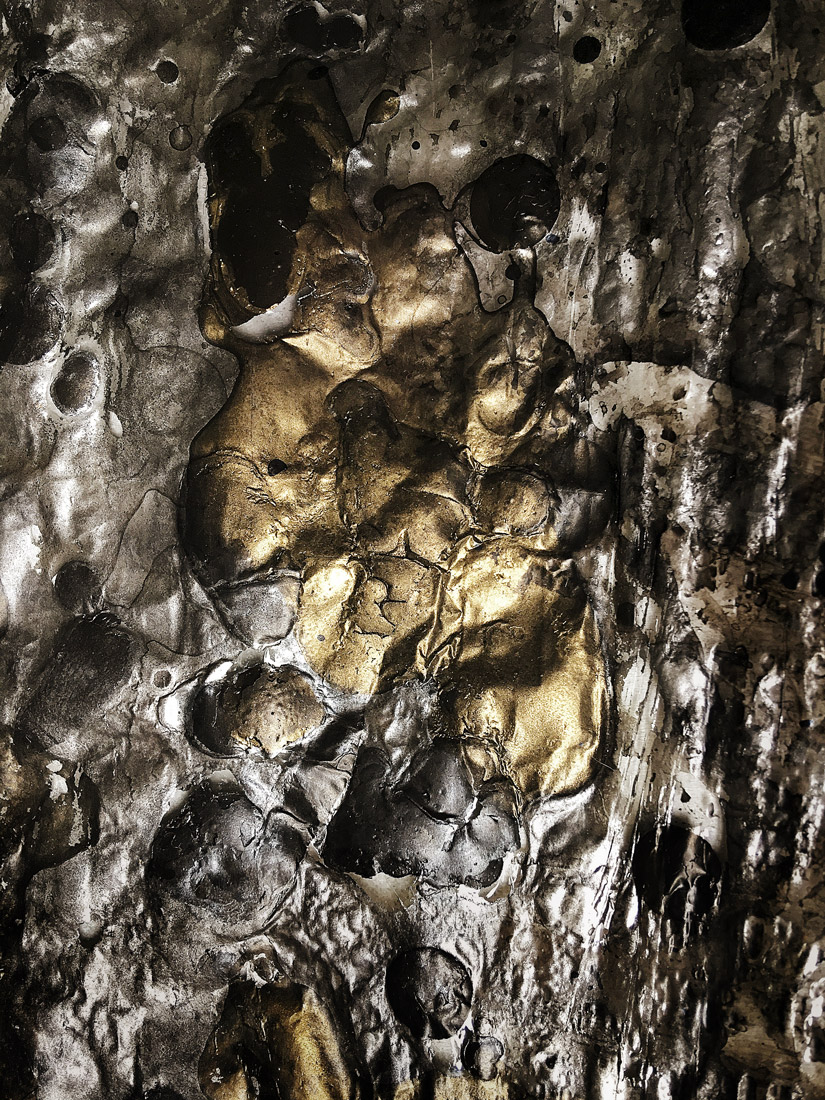
She has dedicated herself fully to her art since 2000, but she first garnered major attention in 2014, following her installations at Saint-Etienne-du-Mont for the Parisian Nuit Blanche, and at the Saint-Denysdu-Saint-Sacrement during the YIA (Young International Artists) Salon hors les murs. There she presented her photographs and the video belonging to the series “Towards the Light—Silent Transformations”, one of the fundamental stages that led her towards her “Matière-Lumières”, as she calls them. They are studies of transitional states of matter, from solid to liquid states, from ice to water, or vice versa.
THE UNCERTAINTY OF PERCEPTION
This concept already informed her installation Reconciliation in 2004: 81 screens showed one video evoking a heartbeat and drops of blood that melted ice. In Towards the Light, she seeks with her camera lens the exact moment when the surface of water transforms, ripples, or freezes, thus playing with the loss of one’s bearings. One doesn’t know anymore if one is looking at a reflection of trees in water, or a real or an imaginary landscape, or a superimposition of images which allow silhouettes to appear as if from nowhere. This hypnotic video, which resembles an internal voyage, was presented in 2015 at the Jeanne Bucher Gallery and at the Maison Européene de la Photographie in Paris, before joining the institution’s permanent video art collection.
The power of these images is particularly dazzling in “Kairos Castle”, at the Gaasbeek Castle in Belgium, where Keller produced them in a very large format. The magic of the juxtapositions conceived by curator Joke Hermsen—brilliant Dutch philosopher and woman of letters—reinforces the meaning of the works. A sculpture of Anthony Gormley, at the center of the room, features a dematerializing body, relaying, via a happy coincidence, the process of metamorphosis dear to Evi Keller and embodied in “Matière-Lumière”. These are veils of transparent film that can reach 16 meters in length—this meticulous work gives the impression of seeing the terrestrial crust of a volcanic landscape, the surface of a metallic slab that would have been bowed, heated, and mangled unto the limits of its physical resistance, or the crystalline skies which arguably show a connection with Turner. The work is not fixed and, according to the lighting, might vary from a telluric planet to a vibrant blood-red heart to the immateriality of ether. “The light reinterprets unto the infinite the works which are modulable in space-time”, she reveals.
Keller leaves us in suspense, and the spectator, incapable of grasping the reality of her works, oscillates between an anchoring in matter and an opening onto the infinite. One’s perception gets blurred if one walks alongside them—the works start to ripple and float, so fluid and light is their support. One finds oneself in cognitive dissonance, as it is defined in social psychology, destabilized in front of all these contradictory pieces of information deciphered differently by the eye and the brain. These are perhaps the conditions for letting go and plunging into this body of work, which is so truly unique in contemporary art, and whose beauty and enchantment function just as well in the studio as in an exhibition hall or outdoors.
In 2016, a “Matière-Lumiere” flirted with an oak tree on the occasion of the “Sèvres Outdoors” show. “After five months on site it became a magnificent tree bark, a veritable communion with the elements, the sun, the warmth and the wind”. The work was not at all spoiled by the weather conditions, “to the contrary, it came close to a very important notion: it became nature. Art becomes sublime when it grows close to the creation of nature”.
THE IMPOSSIBLE DREAM OF THE ALCHEMIST
Evi Keller does not go into the secrets of her fabrication, but one can easily imagine the “canvas” in total transparency covering the floor, on which the artist would dance while scattering her pigments, imprisoning the air, swelling the skin with a flame, rubbing and caressing it with her hand, using the paintbrush and the paint knife. “In my work transfigured by light I join ranks with Joseph Beuys, who touches me in several respects, in the quest for vital substance, in particular that of warmth”. Indeed, some of the sculptures of Beuys, who saw no difference between art and life, are nothing but flux, energy, and warmth. Like a shaman, Keller juggles the four elements to create a fascinating oeuvre akin to the alchemist’s dream: transforming lead into gold. However, the gold at stake here is not that of earthly riches, but of spiritual ones. We are lifted, guided by the precept engraved on the pediment of the Temple of Apollo at Delphi: «Know thyself», which Keller would have replaced by “Become thyself “.
This “voyage of initiation towards the light” of which she speaks is akin to the mental peregrination practiced by the literati of Song China in their landscape paintings; but there, where the path is traced in order to climb up the mountain, it becomes multiple in Keller’s work, placed under the sign of liberty. It is meant, above all, to call upon all the senses, for the artist refuses to enclose her work within a discourse that limits it: each viewer is asked to make it his or hers, to plunge into the different spheres that open up. As when looking in a mirror, everyone recognizes themselves in it, instantaneously passing from microcosm to macrocosm.
The artist does in any case reveal to us that she sees her “Matière-Lumière” as “veils of healing,” an idea that one sees in her sculptures, a facet of her artistic research that she has recently begun. These silhouettes, suggesting a human presence, are, depending on the point of view, masculine or feminine, a duality that digs into the roots of Chinese philosophy and reflects a purely Janusian relationship with time. The plaster that fashions them also assumes the idea of transition of matter: from liquid it becomes solid when it dries. As for the word “plaster” (in French the same word is used for «plaster» and «cast»), it also invokes images of fracture, injury, care, and healing. In fact, once they are all present, these “guardians” will be covered by veils of “Matière-Lumière”. The quest continues.
